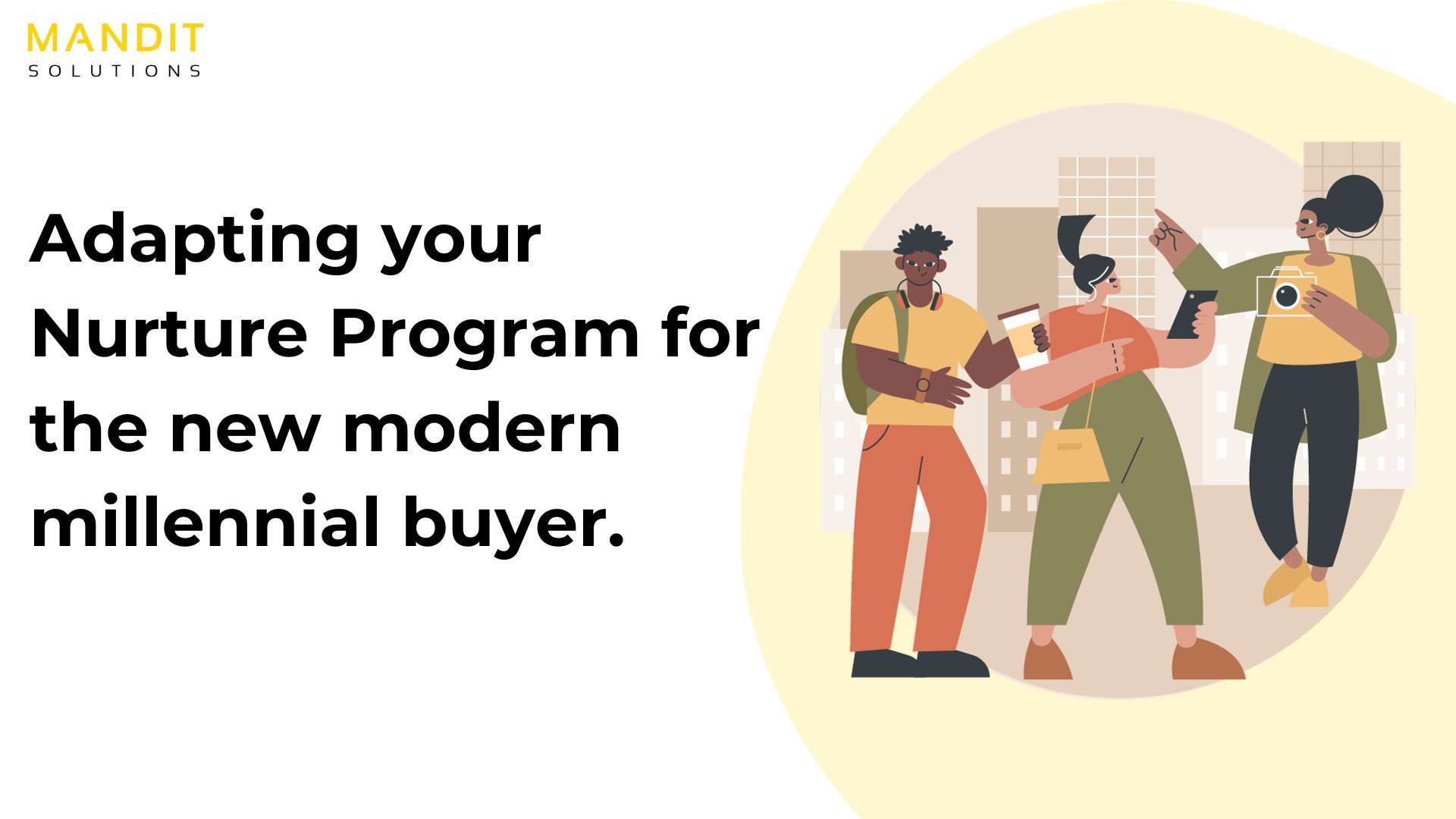
Navigating the ever-shifting terrain of the B2B market can be a daunting task, especially during times of economic uncertainty. The rules are changing, and buyers are becoming more discerning with their choices and investments. The data supports this shift in behavior – 64% of C-suite executives are bracing for a more rigorous procurement process, while 44% of decision-makers admit to being less receptive to sales calls and marketing outreach. It’s evident that the old playbook won’t suffice.
The question that looms large is:
Does your lead nurturing program align with the evolving expectations of the modern B2B buyer?

Many companies have lead nurture programs in place, but all too often, they adopt a one-size-fits-all approach. The opportunity lies in segmenting your lead data to create more advanced and tailored nurture programs. Here are some practical strategies:
Group your B2B leads by their job functions and levels within the organization. Address specific concerns that are relevant to their roles, providing concise, strategic information tailored to C-suite members.
Continue the narrative initiated in your lead generation campaign when nurturing your leads. If interactions begin to wane, it may signal a need for more educational or awareness-focused content.
Divide larger B2B industries into sub-industries. This enables advanced nurturing using sub-industry-specific case studies and content rather than relying on generic assets.
While personalization is a goal, it’s not always necessary to start. Initially, focus on your most significant segments. You can use the same content but adapt the value proposition to suit each group’s unique needs.
Instead of bombarding your leads with lengthy forms, consider implementing progressive profiling. This approach gradually collects additional information from leads over time, reducing friction and improving the user experience.
Implement marketing automation tools to streamline your nurture program. These tools can help you deliver personalized content at the right time, nurturing leads based on their behavior and engagement.
Leverage predictive analytics to identify which leads are more likely to convert. By focusing your efforts on high-potential leads, you can maximize the efficiency of your nurture program.
Consider adopting an account-based marketing approach, particularly if you’re targeting larger organizations. ABM allows you to tailor your nurture program to specific accounts, delivering highly personalized content and experiences.
Continuously optimize your nurture program through A/B testing. Experiment with different messaging, subject lines, and content types to determine what resonates best with your target audience.
Ensure that your sales and marketing teams are aligned. Collaborative efforts can lead to more effective lead nurturing and a smoother transition from marketing-qualified leads (MQLs) to sales-qualified leads (SQLs).
Establish a feedback loop with your existing customers. Their insights can help you refine your nurture program and address pain points that may be preventing conversions.
As you explore these advanced nurturing strategies, remember that success comes from a combination of careful planning, data-driven decision-making, and a commitment to delivering genuine value to your leads. Adapting your nurture program to meet the expectations of the modern B2B buyer is an ongoing process, but with the right strategies in place, you can stay ahead in this ever-evolving landscape.
Remember, the aim is to deliver value, not just volume. Striking a balance between meeting your buyer’s needs and guiding them through the funnel without manipulation is crucial. Fewer but more meaningful engagements can be highly impactful. Shifting your focus in this way benefits your leads and contributes to building trust in your brand.
In a world inundated with marketing messages, it’s the quality interactions that truly address a prospect’s needs that can cut through the noise. This isn’t about flooding inboxes; it’s about strategic, well-timed engagement that speaks directly to your buyer.
Aligning your nurture program with the shifting expectations of the modern B2B buyer is not just a matter of keeping up with trends; it’s about building a robust and adaptable marketing framework. By taking a proactive and strategic approach to nurturing your leads, you can create lasting connections and drive meaningful results for your business, even in times of economic uncertainty.
Dive into our lead nurturing strategies, turning initial interest into long-term relationships.
Copyright © 2025 Mandit Solutions Private Limited
| Cookie | Duration | Description |
|---|---|---|
| cookielawinfo-checkbox-analytics | 11 months | This cookie is set by GDPR Cookie Consent plugin. The cookie is used to store the user consent for the cookies in the category "Analytics". |
| cookielawinfo-checkbox-functional | 11 months | The cookie is set by GDPR cookie consent to record the user consent for the cookies in the category "Functional". |
| cookielawinfo-checkbox-necessary | 11 months | This cookie is set by GDPR Cookie Consent plugin. The cookies is used to store the user consent for the cookies in the category "Necessary". |
| cookielawinfo-checkbox-others | 11 months | This cookie is set by GDPR Cookie Consent plugin. The cookie is used to store the user consent for the cookies in the category "Other. |
| cookielawinfo-checkbox-performance | 11 months | This cookie is set by GDPR Cookie Consent plugin. The cookie is used to store the user consent for the cookies in the category "Performance". |
| viewed_cookie_policy | 11 months | The cookie is set by the GDPR Cookie Consent plugin and is used to store whether or not user has consented to the use of cookies. It does not store any personal data. |